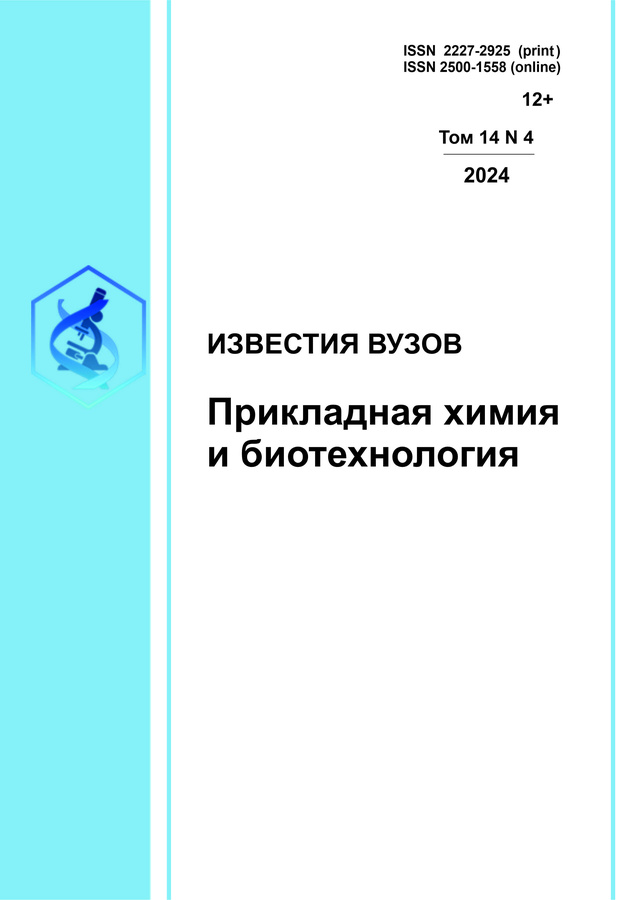Характеристика полисахаридов из корней Eremurus hissaricus методом ИК-Фурье спектроскопии
- Авторы: Ашуров А.И.1, Джонмуродов А.С.1, Усманова С.Р.1, Холов Ш.Е.1, Мухидинов З.К.1
-
Учреждения:
- Институт химии им В.И. Никитина НАН Таджикистана
- Выпуск: Том 11, № 2 (2021)
- Страницы: 281-289
- Раздел: Физико-химическая биология
- URL: https://bakhtiniada.ru/2227-2925/article/view/300925
- DOI: https://doi.org/10.21285/2227-2925-2021-11-2-281-289
- ID: 300925
Цитировать
Полный текст
Аннотация
Ключевые слова
Об авторах
А. И. Ашуров
Институт химии им В.И. Никитина НАН Таджикистана
Email: ashurboy_1593@mail.ru
А. С. Джонмуродов
Институт химии им В.И. Никитина НАН Таджикистана
Email: abduvalid@mail.ru
С. Р. Усманова
Институт химии им В.И. Никитина НАН Таджикистана
Email: surayo.usmanova@gmail.com
Ш. Е. Холов
Институт химии им В.И. Никитина НАН Таджикистана
Email: shavkat.kholov@yandex.ru
З. К. Мухидинов
Институт химии им В.И. Никитина НАН Таджикистана
Email: zainy@mail.ru
Список литературы
- Rakhimov D.A., Yuldashev N.P. Polysaccharides of Eremurus XXIX. Isolation of a glucomannan // Chemistry of Natural Compounds. 1996. Vol. 32. Issue 4. P. 587-588. https://doi.org/10.1007/BF01372621
- Smirnova N.I., Mestechkina N.M., Shcher-bukhin V.D. The structure and characteristics of glucomannans from Eremurus iae and E. zangezu' ricus: assignment of acetyl group localization in macromolecules // Applied Biochemistry and Microbiology. 2001. Vol. 37. Issue 3. P. 287-291. https://doi.org/10.1023/A:1010237419780
- Hu C., Kong Q., Yang D., Pan Y. Isolation and structural characterization of a novel galactomannan from Eremurus anisopterus (Ker. et Kir) Regel roots // Carbohydrate Polymers. 2011. Vol. 84. Issue 1. P. 402-406. https://doi.org/10.1016/j.carbpol.2010.11.054
- Beigi M., Jahanbin K. A water-soluble polysaccharide from the roots of Eremurus spectabilis M. B. subsp. spectabilis: Extraction, purification and structural features // International Journal of Biological Macromolecules. 2019. Vol. 128. P. 648-654. https://doi.org/10.1016/j.ijbiomac.2019.01.178
- Maeda M., Shimahara H., Sugiyama N. Detailed Examination of the Branched Structure of Konjac Glucomannan // Agricultural and Biological Chemistry. 1980. Vol. 44. Issue 2. P. 245-252. https://doi.org/10.1080/00021369.1980.10863939
- Ашуров А.И., Усманова С.Р., Мухидинов З.К., Лиу Л.Ш. Биологически активные компоненты корня эремуруса гиссарского (Е. hissaricus) // Известия высших учебных заведений. Пищевая технология. 2018. N 1 (361). С. 35-38.
- Muhidinov Z.K., Bobokalonov J.T., Ismoilov I.B., Strahan G.D., Chau H.K., Hotchkiss A.T., et al. Characterization of two types of polysaccharides from Eremurus hissaricus roots growing in Tajikistan // Food Hydrocolloids. 2020. Vol. 105. Issue 10. P. 105768. https://doi.org/10.1016/j.foodhyd.2020.105768
- Staub A.M. Removal of proteins: Sevag method. In: Whistler R.L., Bemiller J.N., Wolfrom M.L. (eds.). Methods in Carbohydrate Chemistry. V. General Polysaccharides. New York: Academic Press, 1965. P. 5-6.
- Cai W., Xie L., Chen Y., Zhang H. Purification, characterization and anticoagulant activity of the polysaccharides from green tea // Carbohydrate Polymers. 2013. Vol. 92. Issue 2. P. 1086-1090. https://doi.org/10.1016/j.carbpol.2012.10.057
- Jiang H., Sun P., He J., Shao P. Rapid purification of polysaccharides using novel radial flow ion-exchange by response surface methodology from Ganoderma lucidum // Food and Bioproducts Processing: Transactions of the Institution of Chemical Engineering. Part C. 2012. Vol. 90. Issue 1. P. 1-8. https://doi.org/10.1016/j.fbp.2010.12.001
- Bradford M.M. A rapid and sensitive method for the quantization of microgram quantities of protein utilizing the principle of protein-dye binding // Analytical Biochemistry. 1976. Vol. 72. Issue 1-2. P. 248-254. https://doi.org/10.1006/abio.1976.9999
- Cuesta G., Suarez N., Bessio M.I., Ferreira F., Massaldi H. Quantitative determination of pneumococcal capsular polysaccharide serotype 14 using a modification of phenol-sulfuric acid method // Journal of Microbiological Methods. 2003. Vol. 52. Issue 1. P. 69-73. https://doi.org/10.1016/S0167-7012(02)00151-3
- Ayvaz H., Rodriguez-Saona L.E. Application of handheld and portable spectrometers for screening acrylamide content in commercial potato chips // Food Chemistry. 2015. Vol. 174. P. 154-162. https://doi.org/10.1016/j.foodchem.2014.11.001
- Yaylayan V.A., Wnorowski A, Locas C.P. Why Asparagine Needs Carbohydrates To Generate Acrylamide // Journal of Agricultural and Food Chemistry. 2003. Vol. 51. Issue 6. P.1753-1757. https://doi.org/10.1021/jf0261506
- Kacurakova M., Capek P., Sasinkova V., Wellner N., Ebringerova A. FT-IR study of plant cell wall model compounds: pectic polysaccharides and hemicelluloses // Carbohydrate Polymers. 2000. Vol. 43. Issue 2. P.195-203. https://doi.org/10.1016/S0144-8617(00)00151-X
- Coimbra M.A., Barros A.S., Rutledge D.N., Delgadillo I. FTIR spectroscopy as a tool for the analysis of olive pulp cell-wall polysaccharide extracts // Carbohydrate Research. 1999. Vol. 317. Issue 1-4. P. 145-154. https://doi.org/10.1016/S0008-6215(99)00071-3
- Wellner N., Kacurakova M., Malovikova A., Wilson R.H., Belton P.S. FT-IR study of pectate and pectinate gels formed by divalent cations // Carbohydrate Research. 1998. Vol. 308. Issue 1-2. P. 123131. https://doi.org/10.1016/S0008-6215(98)00065-2
- Da Silva D.F., Ogawa C.Y.L., Sato F., Neto A.M., Larsen F.H., Matumoto-Pintro P.T. Chemical and physical characterization of Konjac glucomannan-based powders by FTIR and 13C MAS NMR // Powder Technology. 2020. Vol. 361. P. 610-616. https://doi.org/10.1016Zj.powtec.2019.11.071
- Acemi A., Qobanoglu O.,Turker-Kaya S. FTIR-based comparative analysis of glucomannan contents in some tuberous orchids, and effects of pre-processing on glucomannan measurement // Journal of the Science of Food Agriculture. 2019. Vol. 99. Issue 7. P. 36813686. https://doi.org/10.1002/jsfa.9596
Дополнительные файлы










